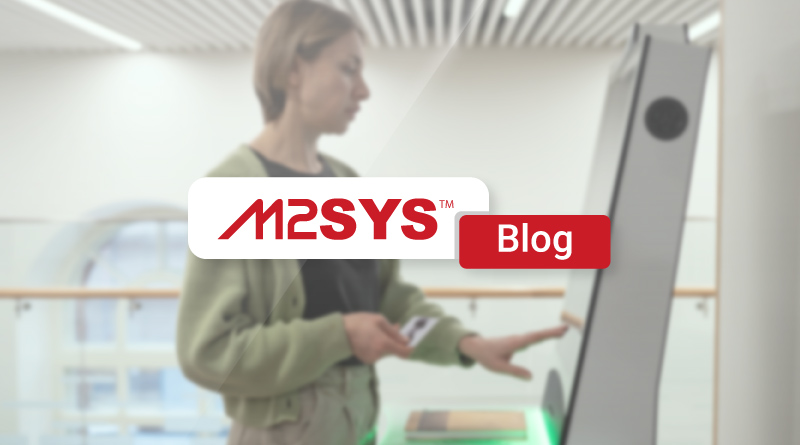Restrict Unauthorized Entry Through Automated Traveler Management
Border agencies face the challenge of managing millions of travelers while identifying unauthorized entries. Automated traveler entry management systems use AI and biometrics to enhance border security, reducing processing times by up to 70%. These systems improve efficiency, accuracy, and risk detection, ensuring safer and faster border crossings.
TL;DR
- Automated Traveler Entry Management: Replaces manual checks with AI-driven systems for faster, more accurate identity verification, reducing processing time by up to 70%.
- Need for Speed: Rising travel numbers and evolving threats necessitate quick, reliable border checks to prevent unauthorized entry.
- Integration Challenges: Linking immigration, customs, and law enforcement systems is crucial for seamless operations and compliance with data privacy laws.
- Centralized Monitoring: Real-time data integration enhances decision-making and national security by quickly identifying and responding to threats.
- Digitization Benefits: Reduces fraud and errors by replacing paper-based processes with secure digital workflows, improving accuracy and accountability.
- Proven Solutions: M2SYS Border Control Solution offers customizable, interoperable platforms that streamline border management and enhance security.
- Adoption Advantages: Automated systems improve efficiency, tighten security, and increase transparency, leading to shorter lines and fewer breaches.
Secure your borders with advanced automated solutions. Contact M2SYS to learn how we can help you implement effective border control systems tailored to your needs.
How can border agencies keep up with millions of travelers crossing lines each year while spotting those who should not enter? This question drives the push for smarter systems in border security. Governments worldwide deal with rising travel numbers and new threats, making quick and accurate checks essential. Automated traveler entry management for border security steps in as a key tool, using technology to handle these demands without slowing down legitimate visitors.
What Is Automated Traveler Entry Management?
Automated traveler entry management replaces old manual methods with digital tools that verify identities fast. Agencies use AI to scan documents, check biometrics, and assess risks in seconds. For example, at busy airports, systems now process passengers through e-gates that automatically read passports and match faces. This shift cuts wait times and boosts accuracy. In fact, studies show that automation can reduce processing time by up to 70 percent, according to reports from the International Air Transport Association. However, many agencies still struggle with outdated setups that lead to long lines and missed threats.
Using Biometric Technology plays a significant role in this process by enhancing the accuracy and efficiency of identity verification.
Why Border Security Needs Faster Verification
Rising global travel puts pressure on borders. The World Tourism Organization notes that international arrivals reached 1.5 billion in 2019, and numbers continue to grow post-pandemic. Meanwhile, threats like smuggling or illegal migration evolve, requiring sharp detection. Manual checks often fail here, as officers handle high volumes and risk fatigue. Therefore, automating these processes becomes vital. It not only speeds things up but also flags high-risk individuals through data analysis. For instance, systems can cross-check traveler information against watchlists in real-time, alerting staff to potential issues before they escalate.
Tackling Integration Challenges in Border Systems
One major hurdle for governments is linking different systems. Immigration, customs, and law enforcement often work in silos, causing delays and info gaps. High costs associated with custom builds exacerbate the problem, and compliance with laws such as data privacy rules further complicates matters. Moreover, deployment can take years, leaving borders vulnerable. Therefore, agencies require platforms that seamlessly connect these pieces. This is where solutions built on experienced platforms shine, drawing from years of global projects to create interoperable setups.
Iraq’s Ports Security has been significantly improved through such integrated systems, providing a real-world example of enhanced border control.
How Centralized Monitoring Strengthens Border Control
Centralized monitoring ties everything together. It pulls real-time data from entry points into one dashboard, so teams spot patterns and respond quickly. For example, if a suspicious traveler appears at a land border, the system alerts sea and air ports instantly. This coordination has proven effective in places like Iraq, where identity verification systems have bolstered national security against fraud and unauthorized entries. As a result, agencies make better decisions and comply with immigration laws more easily.
Digitizing Checkpoints to Fight Fraud
Paper-based processes invite errors and fraud. Forged documents slip through, and lost records hinder audits. Digitization changes this by creating secure digital trails. Workflows go online, sharing data across agencies without paper. Consequently, accuracy rises, and fraud drops. Permanent records ensure accountability, helping governments track compliance and reduce operational costs over time.
Real-World Solutions for Government Agencies
Government contractors and agencies often face these issues head-on. They need tools that automate entry, monitor centrally, and digitize checkpoints without massive overhauls. Platforms with proven track records help here. M2SYS Border Control Solution, with over 20 years of experience working with governments worldwide including in the United States, enables agencies to build and deploy customized border control solutions. It addresses integration pains by offering secure, interoperable setups that connect immigration, customs, and law enforcement systems. For instance, it automates identity checks with AI, cuts human error, and provides dashboards for quick alerts. System integrators utilize it to rapidly roll out solutions, thereby avoiding delays and high costs. Technology vendors partner with it to tailor features for air, land, or sea borders, ensuring compliance and efficiency.
Benefits of Adopting Automated Systems
Adopting these systems brings clear gains. Efficiency improves as processing speeds up, letting officers focus on real threats. Security is tightened with improved risk detection, restricting unauthorized entry. Additionally, transparency is fostered through the sharing of data and regular audits. In short, agencies achieve measurable results, such as shorter lines and fewer breaches.
Moving Forward with Secure Borders
As threats change, borders must adapt. Automated traveler entry management for border security provides a path to handle high volumes while maintaining safety. By integrating automation, monitoring, and digitization, governments can build stronger defenses. Platforms like M2SYS eGov support this by delivering tailored solutions that address real pain points, leveraging global expertise. Agencies that invest now position themselves for long-term success in protecting their nations.
FAQ on Automated Traveler Entry Management for Border Security
- What is automated traveler entry management?
Automated traveler entry management employs advanced digital technologies to streamline identity verification processes at border controls. This includes utilizing AI to check documents, biometrics, and assess risks more effectively than traditional manual methods. - Why is automation necessary in border security?
Given the rise in global travel and evolving security threats, automation in border security is essential for speeding up processing times, enhancing detection of high-risk individuals, and minimizing manual errors. This is addressed in our article Using Biometric Technology. - What are the challenges to implementing automated systems?
Challenges include integrating disparate systems across immigration, customs, and law enforcement, ensuring compliance with privacy laws, and managing the high costs of custom-built solutions. The article on Iraq’s Ports Security provides insight into overcoming these challenges. - How does centralized monitoring aid in border control?
Centralized monitoring consolidates data from various entry points, providing authorities with real-time alerts and coordinated responses to potential threats, enhancing national security. - What role does digital transformation play at checkpoints?
Digitizing checkpoints reduces the risk of document fraud, enhances data accuracy, and provides a secure audit trail for accountability in border operations. Learn more from the M2SYS Border Control Solution.









